Sholinganallur
Then
In 2015, Sholinganallur faced severe flooding with water levels reaching up to 3-4 feet and water stagnation lasted for 7-10 days.
An aerial view of marooned Sholinganallur in Chennai on December 7, 2015.
| Photo Credit:
S.R. Raghunathan
The situation in 2023 was similar, with water levels again around 3-4 feet and stagnation lasting 5-7 days
Essential services such as electricity and water supply were severed.
Many were forced to move to b shelters and hotels.
The illegal sewage let out from several homes at the IT corridor, which has been facing rapid urbanisation, mixed with rainwater worsened the situation.
Now:
Greater Chennai Corporation (GCC) has proposed stormwater drains under the Kovalam Basin project. Further, CMDA has proposed to restrict construction around the Pallikaranai marsh that receives rainwater from this area among many others.
Egmore
Then
Though not typically prone to flooding, saw water levels reach 2-3 feet during the 2015 floods, with stagnation lasting 5-6 days, but the situation was better in 2023 — when water levels were about two feet high near Tamil Salai (Halls Road), with stagnation lasting 3-5 days.
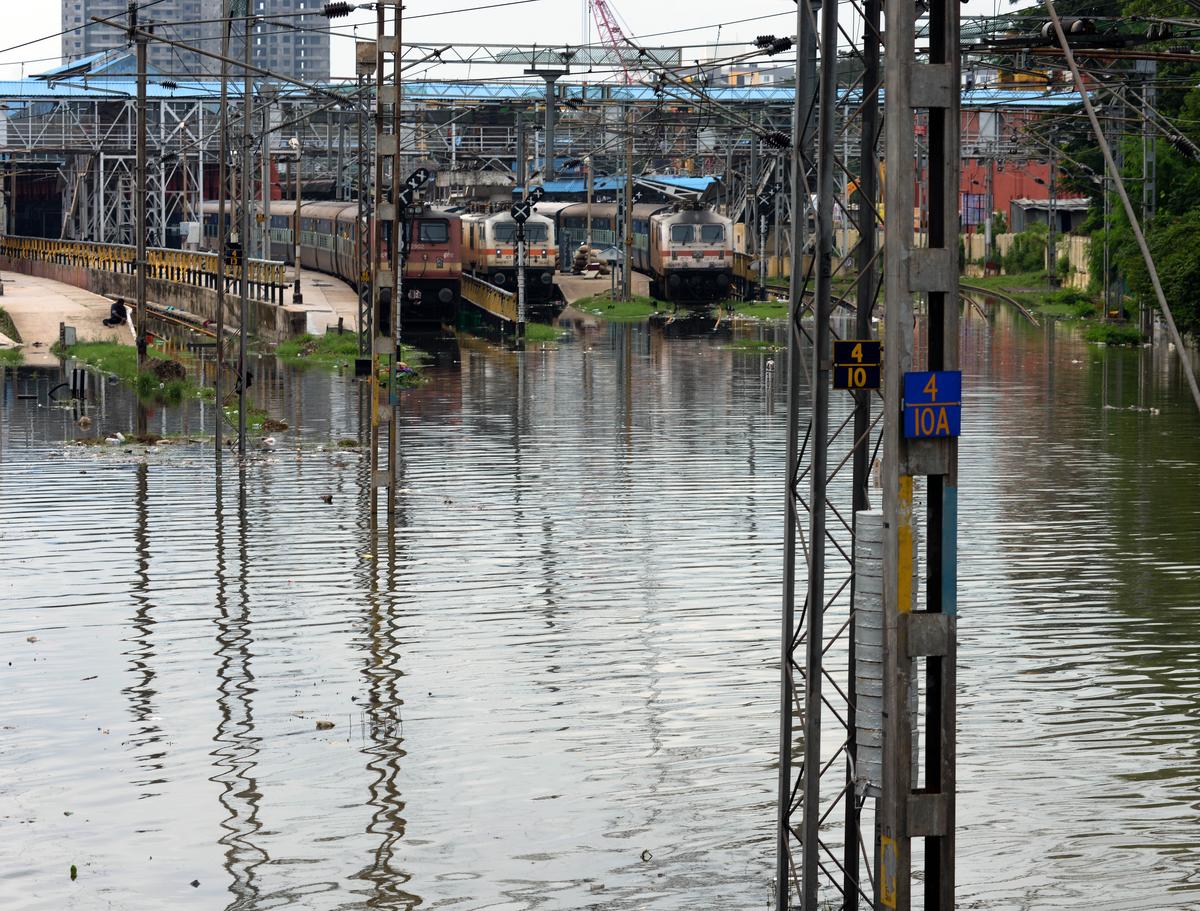
Railway tracks are marooned at Egmore Railway Station in Chennai on December 3, 2015.
| Photo Credit:
The Hindu
The flooding was owing to blockages in the local drainage systems, and the overflow of the Adyar River.
In both years, essential services such as power, water supply and food were strained but not completely shut down since there are hospitals, locals mentioned.
Now:
The GCC has begun desilting drains from July to avoid blockages this year.
Around Egmore, the projects are: construction of stormwater drains along Police Commissioner Office road, Tamil road, Egmore High Road, Velayutham street, Koyathoppu, for a length of 1.91 km at a cost of Rs.2.06 crore. Drains have been constructed along Pantheon Road and Montieth Road, linking it to the Cooum River. Digging of roads by TNEB is under way. It is expected to be completed ahead of the onset of the monsoon.
Kodungaiyur
Then
It has been witnessing severe flooding each year, but 4-5 feet water stagnation lasting over 10 days in 2015.
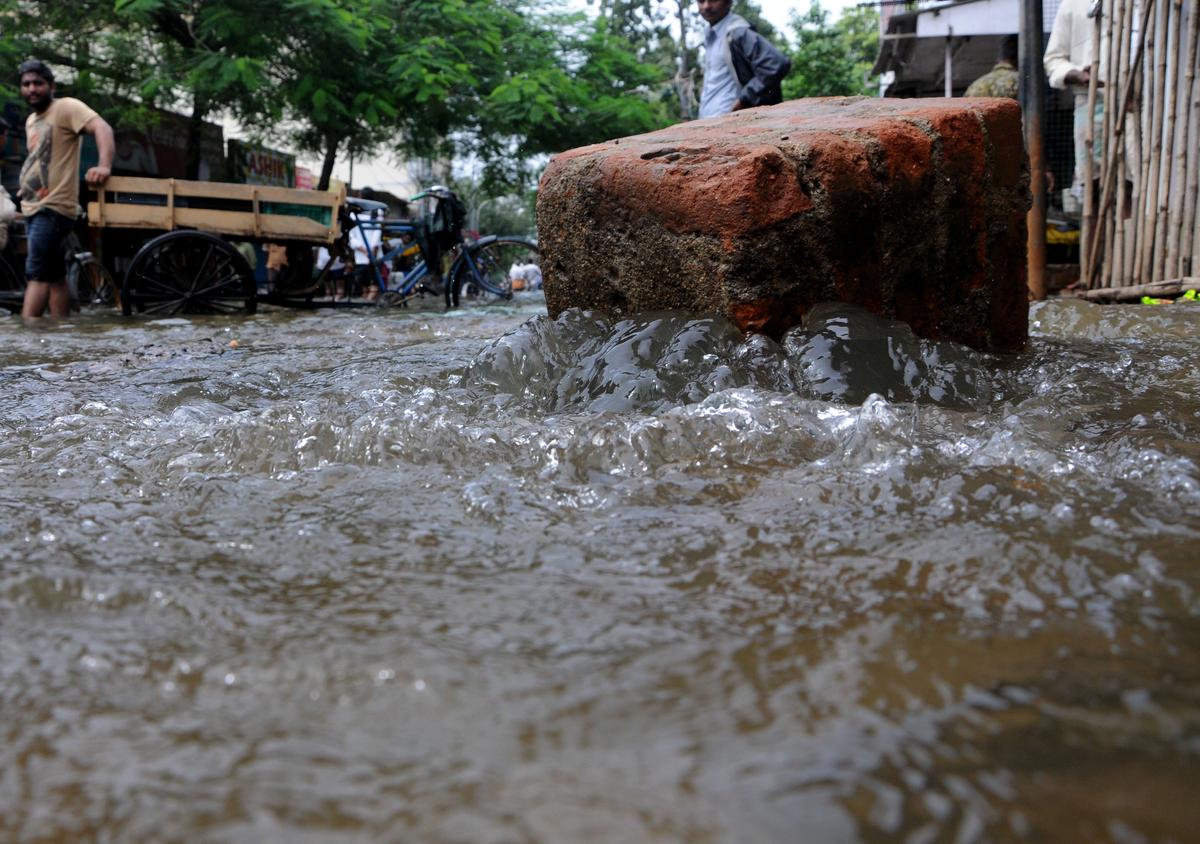
Rain water overflowing from a manhole during the heavy rains at Kodungaiyur in Chennai on December 3, 2015.
| Photo Credit:
B. Jothi Ramalingam
In 2023, similar issues led to water levels of 3-4 feet and stagnation for 7-8 days.
Even the GCC’s dumpyard faced flooding. A low-lying area, that has poorly maintained drainage systems — both for sewage and stormwater — and heavy siltation in drains was cited as a reason. Developments over an alleged water body in this area were mentioned to be the issue for repeated flooding.
The AE Koil Street in Kodungaiyur area was heavily inundated during the 2022 monsoon.
Now
A sump to collect the rainwater and pump sets of capacity 30 HP and 25 HP will be used to bail out rainwater from AE koil street in Kodungaiyur. Two 40 HP pump sets have been installed and a new storm water drain has been constructed for a length of 2.7 km at a cost of Rs. 16.76 crore to drain rainwater to the sea.
The GCC is constructing stormwater drainage systems under the Kosasthalaiyar Basin project. Meanwhile, continuous road digging to install drains has been mentioned as a hassle for residents currently.
Porur
Then
Another low-lying area next to a lake, it experienced water levels of 3-4 feet during the 2015 floods, with stagnation lasting 8-9 days. In 2023, water levels rose to around 3 feet, with stagnation lasting 6-7 days.
An aerial view of marooned Porur area in Chennai on December 6, 2015.
| Photo Credit:
Special Arrangement
The flooding was caused by inadequate drain systems, blocked existing SWDs and the heavy inflow of water from Porur Lake. Porur Junction was flooded during the monsoon due to ongoing construction work by CMRL along the entire stretch of Porur.
Now:
WRD has proposed improvements for Porur lake.
It was suggested to install a 600 m pipeline along Arcot road from Porur Junction to Vanagaram, along with the installation of two 100 HP pump sets.
Additionally, it was proposed to install a 100 HP pump set to drain water from Porur Junction to Mount Poonamallee Road.
Kolathur
Then
Again, an area abutting a lake, in 2015, Kolathur saw water levels of 2-3 feet and stagnation for nearly a week. it saw water levels up to around 2 feet, with stagnation lasting 4-5 days in 2023.
An aerial view of the Kolathur area which is flooded after the rain in Chennai on December 3, 2015.
| Photo Credit:
The Hindu
Frequent power outages and water supply issues were reported during both floods. Kolathur Lake has seen rapid urbanisation which is also a cause for concern, according to GCC officials, as sewage drain systems need to be installed for newer development, otherwise, the lake will be at the receiving end of all untreated wastewater, they added.
Now:
The GCC has been desilting stormwater drains and planning new drain routes in some streets to mitigate future floods. Chief Minister M.K Stalin inspected the area recently to check flood mitigation works.
Manali
Then
Manali was among the worst affected in North Chennai, especially Sathyamoorthy Nagar. Last year, in December, locals said water levels rose over feet in many parts and stagnation lasted for about 6 days.
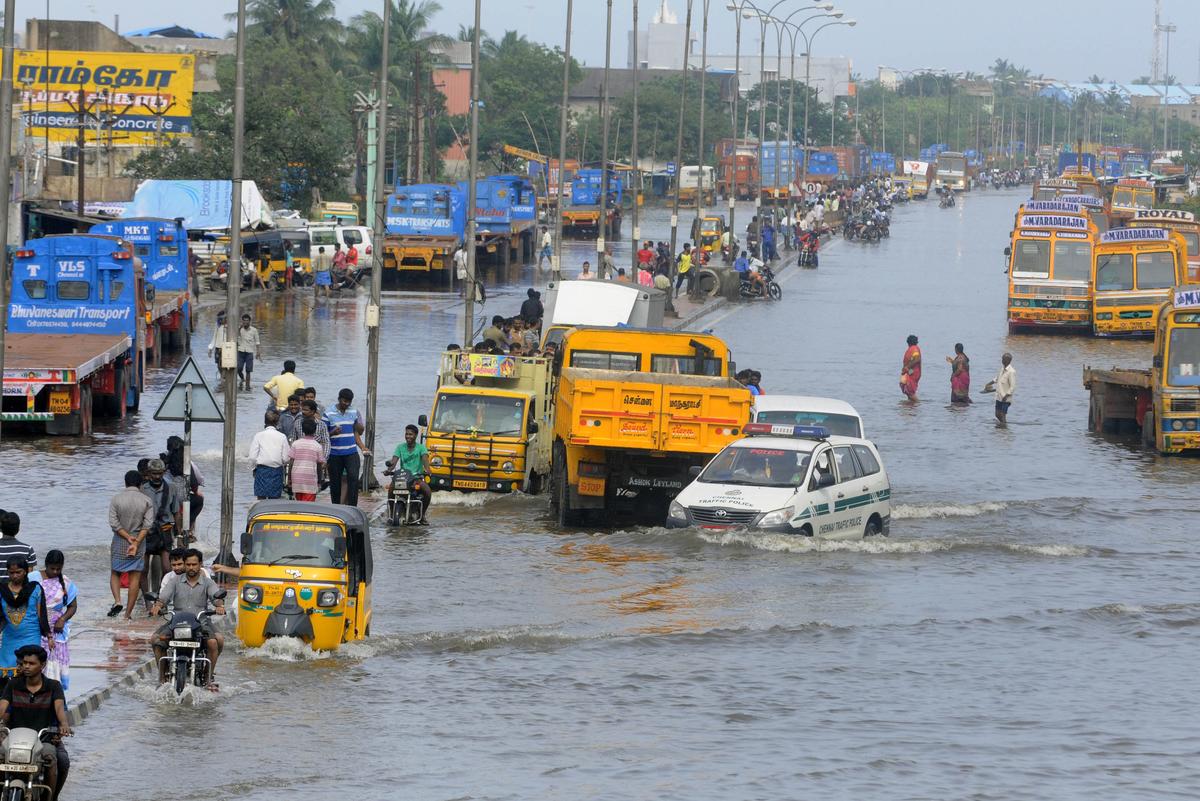
A view of the marooned Manali Express Road, Tiruvottiyur in Chennai on December 5, 2015.
| Photo Credit:
B. Jothi Ramalingam
Moreover, oil leak from industrial areas exacerbated the issue. Back in 2015, this industrial area saw 3-4 feet of flooding, with water stagnation lasting 7-8 days. In both occurrences, power cuts and lack of proper shelter, food and medical services were reported. Industrial operations were significantly impacted.
Now:
The GCC is working on improving the SWD system under the Kosasthalaiyar Basin. The situation has not improved much as many drains still remain clogged and inflow from northern suburbs may worsen conditions, locals have raised concern.
T. Nagar and Kodambakkam
Then
In 2015, T.Nagar faced severe flooding with water levels reaching up to five feet. In the following monsoons, flooding reduced in several areas, but some new roads reported similar flooding, with water levels 3-4 feet.
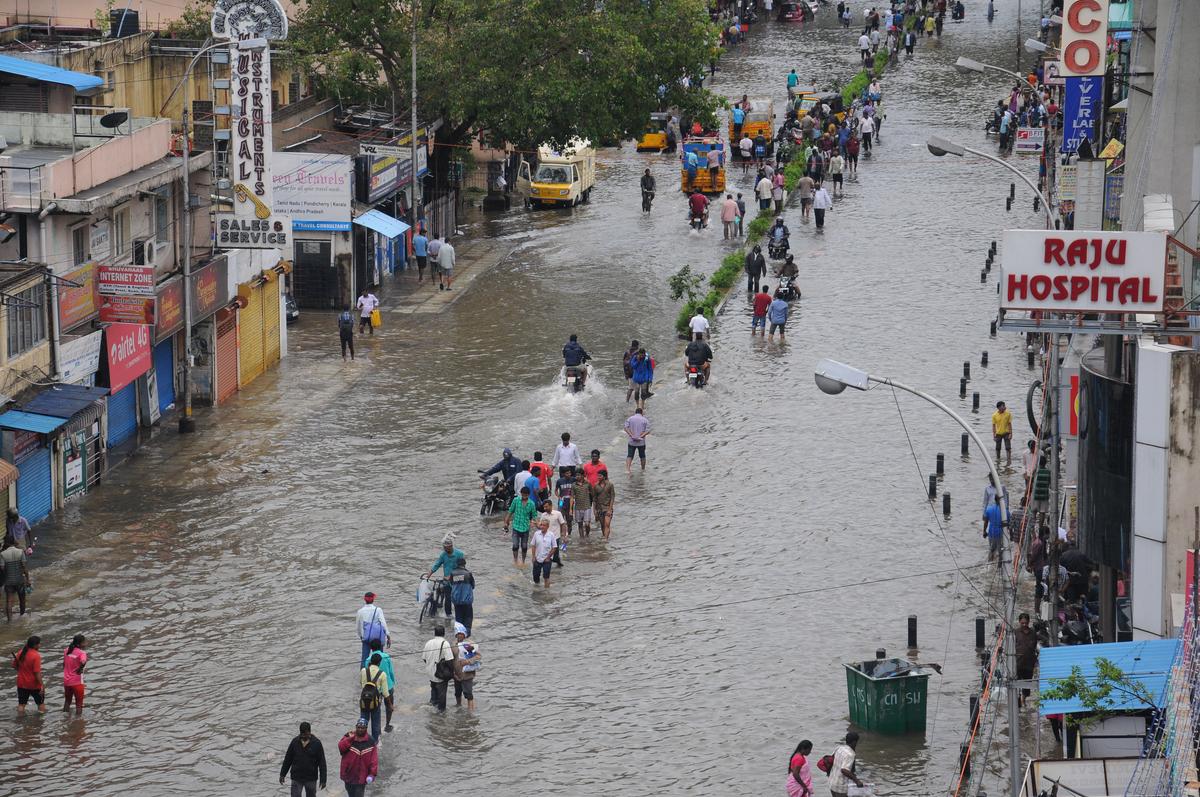
View of flooded South Usman Road, T. Nagar in Chennai on December 2, 2015.
| Photo Credit:
R. Ragu
Essential services such as electricity and water supply were disrupted.
Many were forced to move to relief shelters and hotels.
The illegal sewage let out from several homes mixed with rainwater worsened the situation.
Now:
Residents have complained about sewage mixing with drinking water and pollution of ground water because of the Usman Road bridge project.
In the heavily-inundated areas in T. Nagar during the monsoon of 2021, construction of stormwater drain was completed in Bazullah road, GN Chetty Road, Vijayaraghava road, Thirumalai Pillai road, Nair road for a length of 5.29 km at a cost of Rs.21.95 crore. Preparation along canals such as Mambalam canal is under way.
Velachery
Then
Velachery was among the worst affected in the city last monsoon. Residents said water levels rose to three to five feet in many parts and stagnation lasted for three days.
Country boats were used to supply food and other essentials and to bring people from the flooded area at Vijayanagar in Velachery on December 6, 2023.
| Photo Credit:
S.R. Raghunathan
Disruption of power supply, lack of proper shelter, food and medical services were reported.
Now:
In the heavily inundated areas in Velachery, eight pumpsets with a total capacity of 400 HP have been installed to drain water.
Construction of storm water drains has been completed in AGS Colony, Tansi Nagar, Anna Nagar Extn, Peeliamman Koil Street for a length of 990 m at a cost of Rs.3.15 crore. Encroachments in Velachery lake have not been removed yet. Veerangal Odai has not been cleared. Encroachments on a canal near Perungudi Railway Station to the marshland continues to increase the risk to Ward 177 and Ward 178.
Madipakkam, Pallikaranai
Then
In 2015, Pallikaranai faced severe flooding with water levels reaching up to three feet and water stagnation lasted for 7-10 days.
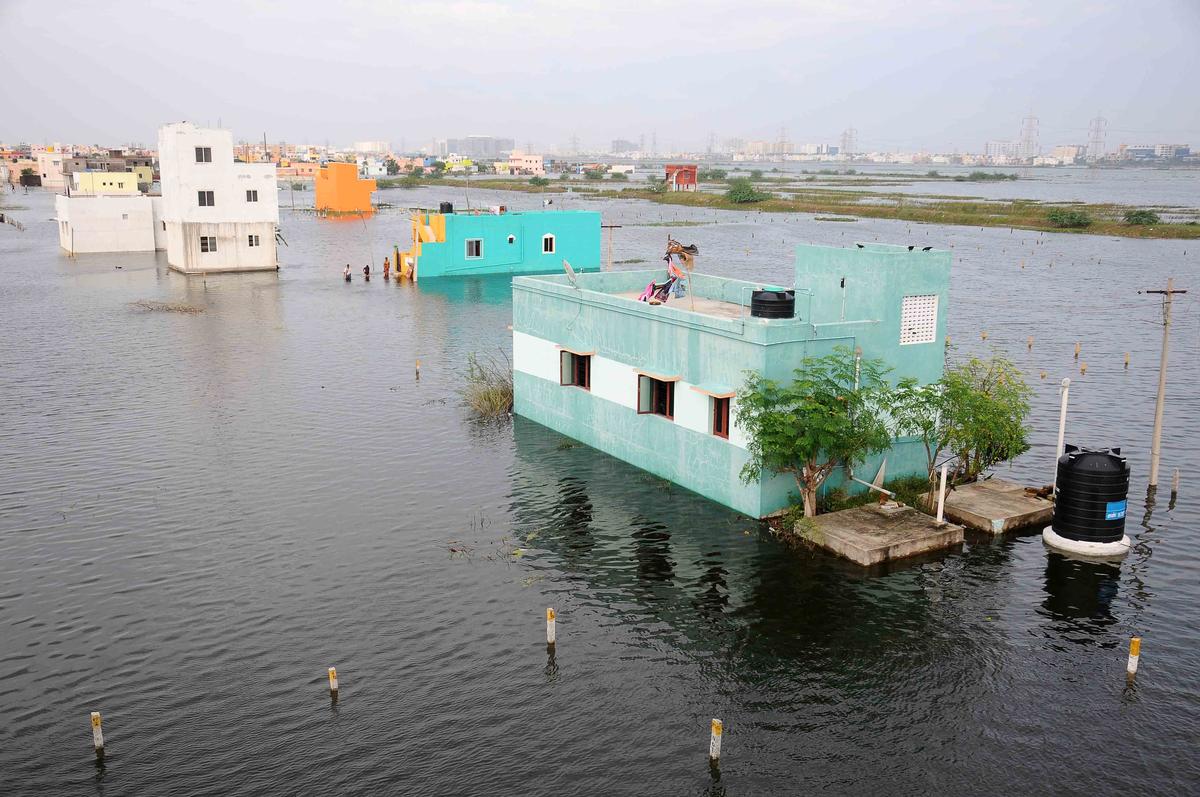
Water surrounds homes in and around Pandian Nagar and Sai Ganesh Nagar, Pallikaranai in Chennai in 2015.
| Photo Credit:
The Hindu
The situation in 2023 was similar, with water levels again around 3-4 feet and stagnation lasting 5-7 days.
Essential services such as electricity and water supply was disrupted
Many were forced to move to shelters and hotels.
Now
In South Chennai, construction of an integrated storm water drain has been taken up in two phases for a length of 160.54 km at an estimated amount of Rs. 597.48 crore. Work has been completed for a length of 125.95 km at a cost of Rs.370 crore.
Phase III is currently in progress and is estimated to cost Rs. 989 crore. The project is being funded with assistance from KfW, a German bank. As of now, 83% of the work for phases I and II has been completed.
Once the integrated stormwater drain work is completed, residents in areas such as Velachery, Madipakkam, and Pallikarani will get relief from rain water stagnation.
Manapakkam
Then
In 2015, Manapakkam faced severe flooding with water levels reaching up to five feet and water stagnation lasted for a week.
An aerial view of marooned Manapakkam in Chennai on December 7, 2015.
| Photo Credit:
S.R. Raghunathan
The situation in 2023 was similar, with water levels again around 3-4 feet.
Essential services such as electricity and water supply was disrupted
Many were forced to move to shelters and hotels.
Now
In South Chennai, work on the 15 lakh litre capacity sump at three locations along the Adyar river to pump water is under way.
Tiruvottiyur
Then
Flooding was 3 to 5 feet in several areas.
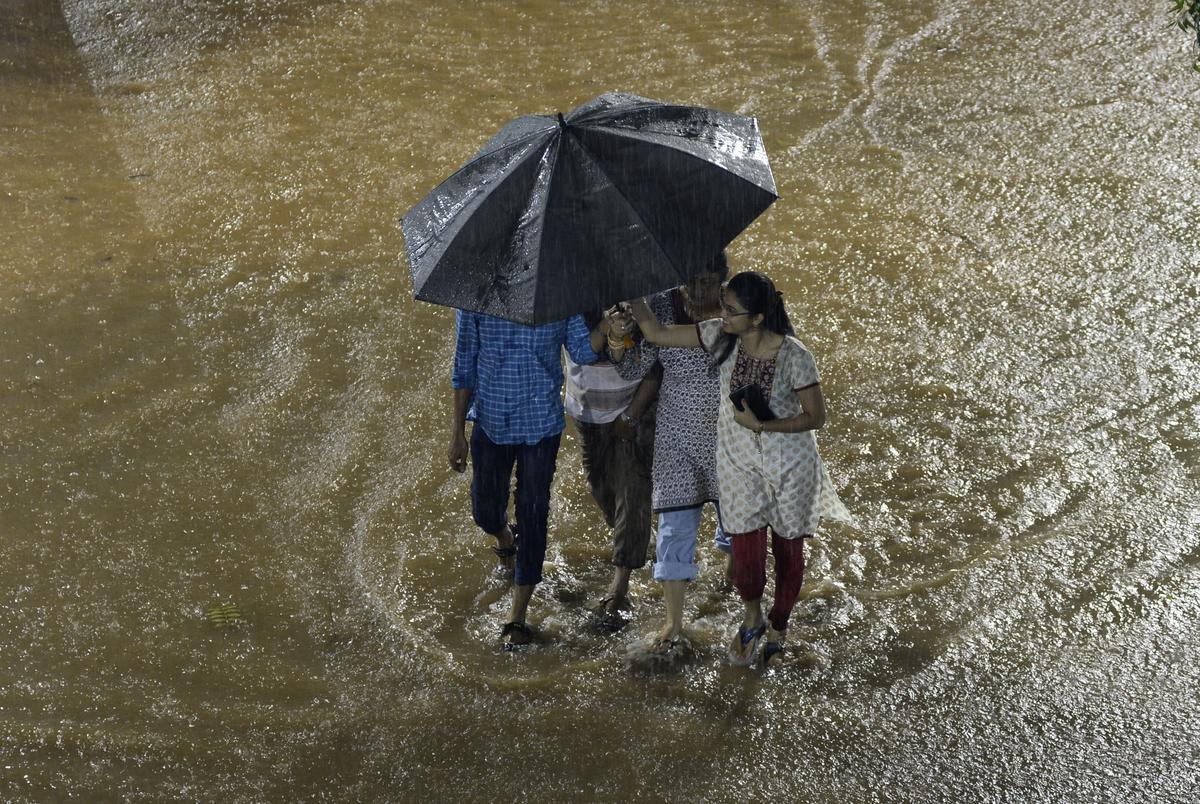
Youngsters share an umbrella in the heavy rain.
| Photo Credit:
R. Ragu
Now
In the extended areas of Greater Chennai Corporation, construction of integrated storm water drain has been taken up for a length of 675 km at an estimated amount of Rs.3220 crore under the funding assistance of Asian Development Bank and completed for a length of 570 km at a cost of Rs.2300 crore.
So far 85% of work has been completed. Remaining work will be completed before September 30, 2024.
After completing the integrated stormwater drain works, inundation is expected to reduce in Thirvottriyur, Manali, Madhavaram, Ambattur and Kolathur.
Triplicane
Then
Dr. Besant Road area was flooded during the previous monsoon, in some areas the water was neck deep.
The inundated Triplicane High Road in Chennai
| Photo Credit:
S.R. Raghunathan
Now
The construction of a stormwater drain for a length of 470 metre at a cost of Rs. 1.59 crore has been undertaken, and the work has been completed.
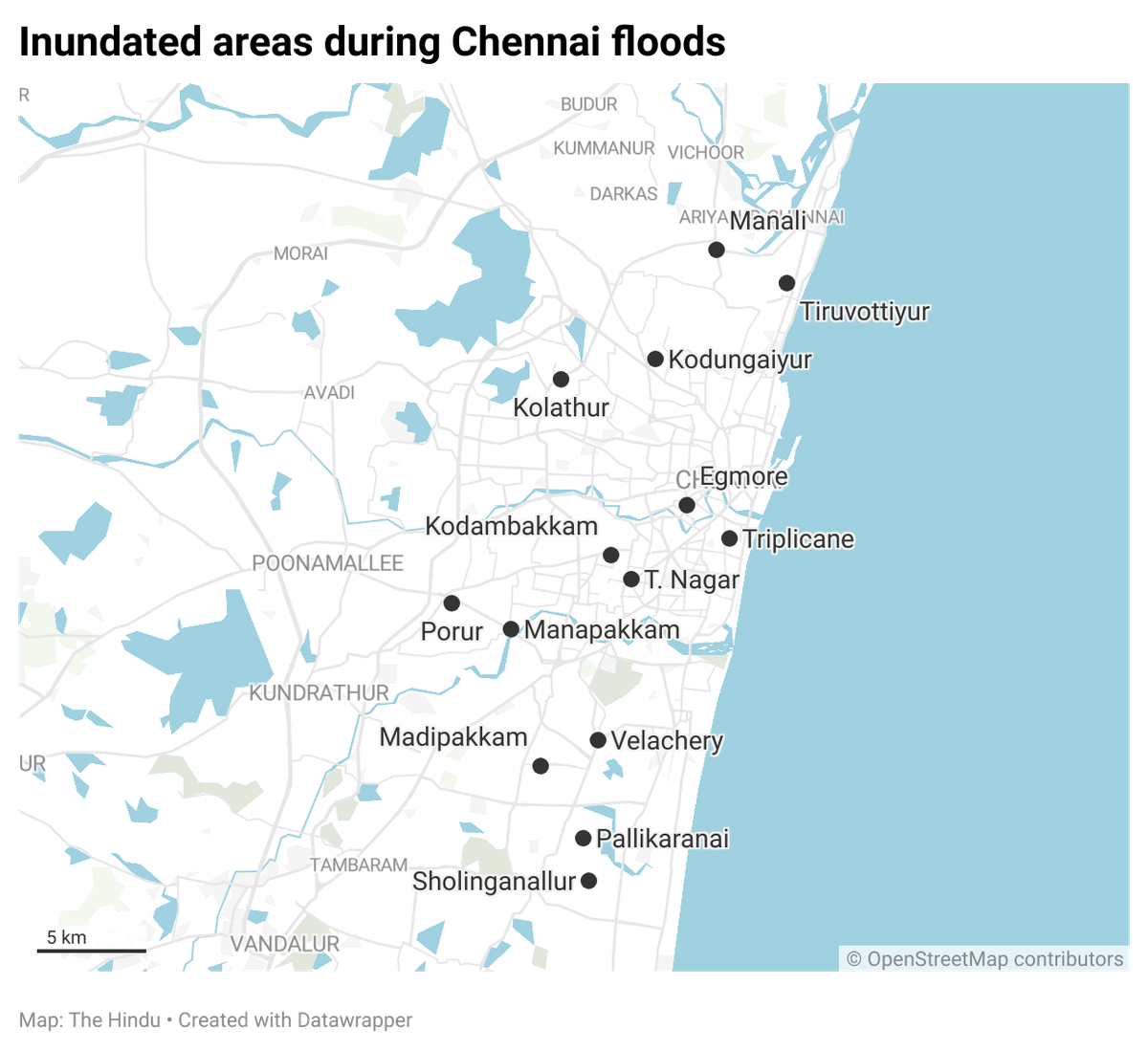
Facts about forthcoming rainfall
Total number of residents in Chennai Metropolitan Area – over 1 crore
Government agencies involved in flood mitigation: Greater Chennai Corporation, Metrowater, Water Resources Department, Railways and the Highways Department have consistently taken efforts to mitigate flooding.
Predicted onset of the north east monsoon : October 27 this year, Greater Chennai Corporation maintains
1. 1.3040 km of stormwater drain network comprising 11,770 stormwater drain structures.
2. 33 canals to a length of 53.42 km.
Average annual rainfall in Chennai during NE monsoon, 2023 – 132 cm in the year 2021 – 200 cm
During the NE Monsoon in 2021, 561 locations were inundated in Chennai.
So far 246 km of stormwater drain has been constructed at a cost of Rs. 856 crore in Chennai.








![Best Weight Loss Supplements [2022-23] New Reports!](https://technologytangle.com/wp-content/uploads/2022/12/p1-1170962-1670840878.png)




